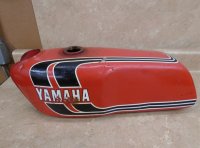ahhh Rotax, i used to have Can Am Sonic 500 with rotax motor, that was a fun bike memory moment...you up for another spanish inquisition question? How bout a list of all your current bikes, bet it pretty interesting...and i a little more pushy than mailman and ask for pics with your bike list too!!!The used market is also rightfully hard on "Sport bikes" they tend to have been rode hard......Not to mention the old man riding a sport bike for more than 15 minutes thing.... The http://www.badweatherbikers.com/buell Forum ( a somewhat smaller clone of XS650 typical comment is; I expect to spend 50 to 75% of the purchase price on parts to make it right. Harley parts on Yamaha parts prices... "Labor is free"
There are a few Harley dealers supporting Buells yet. The EBR's not so much. I have a back of my mind feeling that Harley went out their way to "discourage" dealers from having anything to do with EBR. Since most engine parts are either Harley or Rotax there's strong availability there.
Last edited:










 I’m the best armchair quarterback!
I’m the best armchair quarterback!